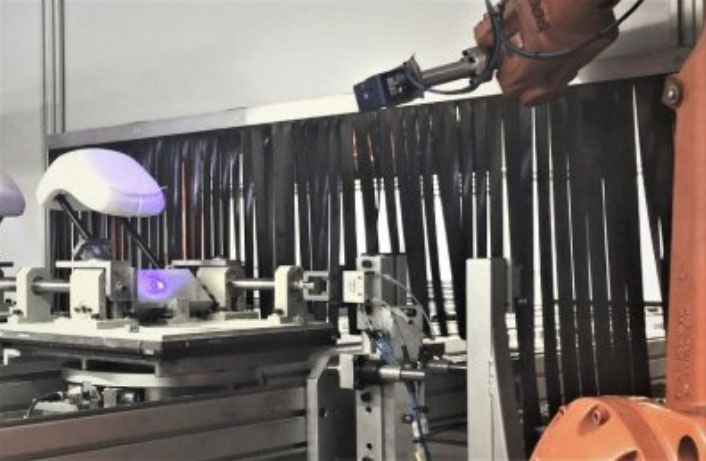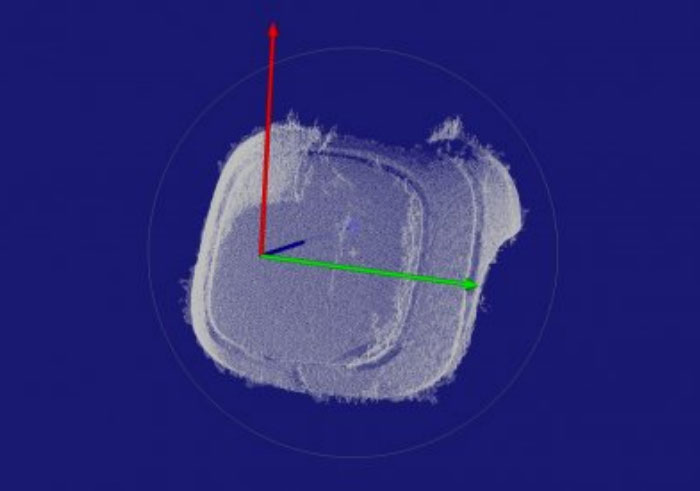The conditions placed on original equipment manufacturers and suppliers are immense in order to ensure high quality and continuous improvement, waste reduction and error minimization.
 Exact Trimming of Foam Parts With Ensenso 3D Camera
Exact Trimming of Foam Parts With Ensenso 3D Camera

Case Study from | IDS Imaging Development Systems
For companies in the automotive industry, quality management and process management are of great importance. The conditions placed on original equipment manufacturers and suppliers are immense in order to ensure high quality and continuous improvement, waste reduction and error minimization.

Particular attention is also paid to the interior of a passenger car, as it contributes greatly to the "feel-good atmosphere" for the driver. To ensure perfect seating comfort in the vehicle, manufacturers place correspondingly high demands on the foams to be processed: they must be adaptable and flexible, resistant and durable, but also have a good feel and appearance. They also play a major role in the overall impression of the comfort of a passenger car interior.
But high quality standards must always go hand in hand with economic efficiency. The American manufacturer of headrests and armrests Adient has thought about this topic in order to increase the cycle rate and accuracy in the production of these foamed small parts, reduce waste and thus increase the effectiveness of the manufacturing process. At the Slovenian plant in Slovenj Gradec, an automated trimming line was recently put into operation for these products. The solution for the exact trimming of armrests and headrests was developed and integrated together with the French company Gips Vision. The supplier of 3D systems for foam production, based in Marseille, designed two robot cells that literally put the finishing touches to the product - after production on the actual production line.
In the first cell, an Ensenso 3D camera from IDS is used to capture the 3D data of the foam. The Ensenso N20 first identifies the object. The robot then moves around the product. The camera generates a so-called 3D point cloud from the foamed headrests or armrests. The result is an exact 360° image of the foam product which the processing unit compares with a given 3D model. The exact position of the trim curve on the actual foam surface is determined point by point. The actual reworking begins in the second cell. The robot trims the product using the data determined in cell 1. Specifically, it cuts the foam with a grinding tool. During this trimming process, any burrs or foam defects that the driver might feel on the contact surface are removed.
The system is accurate to 2/10 mm and can be used around the clock. It can finish up to 120 pieces of the foam material per hour. "For our customer Adient, this is the first step in automating the trimming of their foam parts," explains Thomas Derrien, Innovation Project Leader of Gips Vision. "The robots with integrated image processing make daily work much easier because they always avoid the same tedious manual tasks. At the same time, they ensure a noticeable improvement in quality".
Gips Vision has opted for the Ensenso N20 from IDS on the camera side. The main reasons for the integration of this model were the outstanding speed and the processable data volume. In addition, the robust, compact aluminum housing of the Ensenso N20 3D camera, with screwable GPIO connectors for trigger and flash, is particularly suitable for the harsh environment of a production hall. All Ensenso 3D cameras work according to the "Projected Texture Stereo Vision" method, which is based on human vision. Each model uses two CMOS sensors and a projector that casts auxiliary structures onto the object to be captured, in this case the foam parts, to increase the accuracy of the surface image.
The two CMOS cameras view the respective foam part from different positions. Although the image content of both camera images seems to be identical, they show differences in the position of the object being viewed, i.e. the headrest or armrest. Since the distance and viewing angle of the cameras as well as the focal length of the optics are known, the Ensenso software can convert these deviations into known lengths by triangulation and thus determine the 3D coordination of the object point for each individual image pixel and merge them into a 3D point cloud of the foam part to be processed.
The quality of Stereo Vision depends directly on the lighting conditions and the surface texture of the objects. Since foam has an easily recognizable texture compared to smooth or reflective surfaces, sufficient accuracy can be achieved with just one image pair. The Ensenso N20 model used enables a fast image acquisition and evaluation of the 3D point cloud. The Ensenso N series convinced both the system integrator and the customer - not only in terms of precision, but also in terms of economy and speed.

Outlook
The demands on manufacturers and suppliers in terms of quality and price are not only increasing in the automotive industry. The changes towards digital processes are also being driven forward in other industries. The French company Gips Vision is therefore not only developing market-oriented 3D applications for foam production, but is also incorporating its expertise in similar applications. Ensenso 3D cameras prove their worth in a wide variety of application scenarios, from quality assurance to pick & place.
Whether for the precise detection of special details on moving or still objects (even on shiny, dark and reflective surfaces); for use in multi-camera systems or for adaptive robot control, 3D vision and robot vision applications equipped with Ensenso 3D cameras facilitate daily work in robot technology and in automated series production and thus follow the order of the day: precision meets economy.
Client:
Gips Vision has more than 25 years of experience in industrial image processing. Based in Marseille, France, the system integrator develops systems for machine vision, quality control, measurement, inspection, sorting, process control and identification.
Adient is a world leading manufacturer of car seats and (car) interior parts. The company develops and builds high-quality seating systems and components that offer safety, functionality and comfort.

About IDS Imaging Development Systems GmbH
The industrial camera manufacturer IDS Imaging Development Systems GmbH develops high-performance, easy-to-use USB, GigE and 3D cameras with a wide spectrum of sensors and variants. The almost unlimited range of applications covers multiple non-industrial and industrial sectors e.g. in the field of equipment, plant and mechanical engineering. In addition to its successful CMOS cameras, the company expands its portfolio with vision app-based sensors and cameras. The novel image processing platform IDS NXT is freely programmable and extremely versatile.
The content & opinions in this article are the author’s and do not necessarily represent the views of RoboticsTomorrow

IDS Imaging Development Systems Inc.
World-class image processing and industrial cameras "Made in Germany". Machine vision systems from IDS are powerful and easy to use. IDS is a leading provider of area scan cameras with USB and GigE interfaces, 3D industrial cameras and industrial cameras with artificial intelligence. Industrial monitoring cameras with streaming and event recording complete the portfolio. One of IDS's key strengths is customized solutions. An experienced project team of hardware and software developers makes almost anything technically possible to meet individual specifications - from custom design and PCB electronics to specific connector configurations. Whether in an industrial or non-industrial setting: IDS cameras and sensors assist companies worldwide in optimizing processes, ensuring quality, driving research, conserving raw materials, and serving people. They provide reliability, efficiency and flexibility for your application.
Other Articles
2D cameras for positioning and inspecting ultra-fine wires in semiconductor production
Picking the right chart - (Semi-)Autonomous surface and underwater mapping for rivers and lakes
Pallet by pallet - Intelligent robotic vision system destacks up to 800 objects per hour
More about IDS Imaging Development Systems Inc.
Comments (0)
This post does not have any comments. Be the first to leave a comment below.
Featured Product

